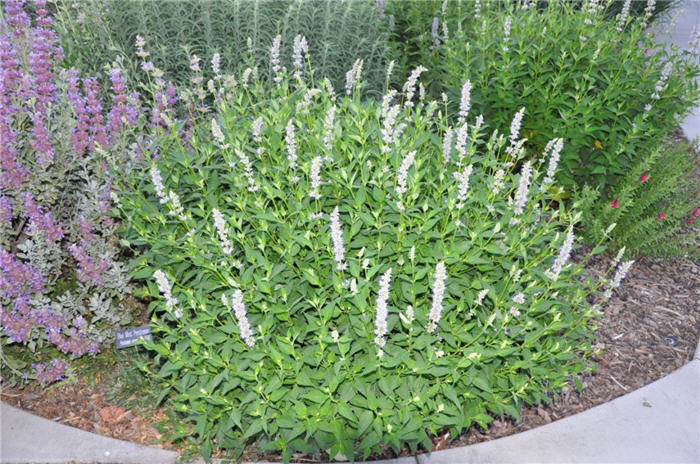| Botanical Name: Agastache x 'Black Adder' | |
| Common Name: Giant Hyssop |

-
Anatomy
-
Culture
-
Design
Plant Type
Perennial, Herb
Height Range
1-3'
Flower Color
Red, Violet
Flower Season
Summer, Fall
Leaf Color
Green
Bark Color
n/a
Fruit Color
n/a
Fruit Season
n/a
Sun
Full, Half
Water
Low, Medium
Growth Rate
Fast
Soil Type
Sandy, Clay, Loam
Soil Condition
Average, Rich, Poor, Well-drained, Dry
Soil pH
Neutral, Basic
Adverse Factors
n/a
Design Styles
English Cottage, Mediterranean, Ranch, Spanish
Accenting Features
Fragrance, Showy Flowers
Seasonal Interest
Summer
Location Uses
Perennial Border, Raised Planter
Special Uses
Container, Small Spaces
Attracts Wildlife
Hummingbirds, Butterflies
Information by: Stephanie Duer
Photographer:
Photographer:
-
Description
-
Notes
'Black Adder' is an upright, clump-forming giant hyssop that grows to 2 to 3 feet tall and about 2 feet wide. It has a long summer-to-frost season of bloom, with tubular, smoky red-violet flowers that emerge from nearly black buds that bloom in showy, bottle-brush, spikes. Aromatic (anise/licorice scented), lance-shaped to ovate leaves are blue green. Flowers are attractive to bees, hummingbirds and butterflies. Not as drought tolerant as its desert kin, but still a worthwhile addition to the herb garden.
Grow in average, dry to medium moisture, well-drained soils in full sun to part shade, though best in full sun. Good soil drainage is essential. Plants will perform poorly and may not survive winter in unamended clay soils or over-watered soils. Plants tolerate heat and some dry soils once established. Deadhead spent flower blooms to promote additional bloom. Cut back the dead stems in late winter to early spring.